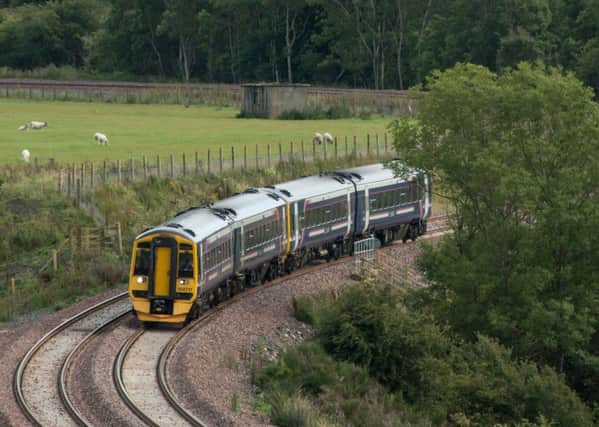Shoppers benefit most from Borders Railway, finds survey


Even in the Scottish Borders Council ward of Galashiels and District, only 11% of respondents indicated they may take the train to work, while 55% said they would use it for shopping.
In Leaderdale and Melrose, which includes the Tweedbank terminus, even fewer people (7%) said they were likely to use the railway for work purposes with 48% saying they would use it for shopping.
Advertisement
Hide AdAdvertisement
Hide AdAlthough these views were canvassed before the line opened in September, the findings from the 2015 Scottish Borders Household Survey appear to chime with the subsequent experience of those retailers in Galashiels who recently claimed the railway had resulted in a net exodus of shoppers from the town.
Ironically, when the 2,706 households from across the region who responded to the survey were asked to tick the “neighbourhood issues” most important to them, “growing the economy of the Borders and supporting local retailers and businesses” emerged as the top priority.
Second on the wish list was “providing high quality care for older people”, followed by “tackling poverty and inequality.”
The results of the survey, which saw questionnaires issued to 6,000 randomly selected households in May, were presented at last week’s meeting of the council which paid £11,090, excluding VAT, to commission the research from Cambuslang-based Research Resource,
Advertisement
Hide AdAdvertisement
Hide AdOther public organisations, including the region’s four registered social landlords, chipped in another £4,239. The bulk of the questions related to the public’s perception of the council’s performance with 65% rating the local authority “excellent” or “good” (down from 69% when the last survey took place in 2013), while 22% (17%) said it was “poor” or “very poor”.
The biggest bugbear for those who responded was the speed at which the council repaired damaged local roads, with 74% saying they were dissatisfied.
There was no change in the number of respondents content with their neighbourhood as a place to live with more than nine out of 10 (92%) saying they were, citing “good neighbours” and “peace and quiet” as contributory factors.
Most residents (67%) believed their neighbourhood had stayed the same over the past two years, while 15% said it had got worse and 9% felt it had got better.
Advertisement
Hide AdAdvertisement
Hide AdJust over one in 10 (13%) said there were places in their local area where they felt unsafe, particularly during the evening, with Hawick (23%) and Galashiels (15%) the focus of most of this disquiet.
The most common reasons for feeling unsafe were groups of youths (32%) and alcohol and drug-fuelled behaviour (33%).